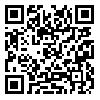BibTeX | RIS | EndNote | Medlars | ProCite | Reference Manager | RefWorks
Send citation to:
URL: http://salmandj.uswr.ac.ir/article-1-481-en.html
Objectives: by reducing the fertility rate and Improve health& social conditions in Iran, increases the statistics of population older women also follow the whole population of seniors. So that in two decades than has increased the population of elderly women to total female population of 3 percent to 4.1 percent in the recent census in 2006 to 7 percent and is expected that increasing continues this trend the next decades. Global statistics show that significantly more elderly woman than elderly men in most countries, developed and developing, But according to the Statistical Center of Iran shows that during 1976-2006 has increased in every decade the number of elderly women in Iran Due to improved health services, social and economic, but has reduced the population of elderly women than elderly men This happened while usually Is less life expectancy in men than women .therefore In this paper we study the population status, health, education, family status, employment, quality of life and isolation of elderly women in Iran and We review different reasons than elderly women than elderly men in gender.
Methods & Materials: This study is a descriptive-analytical study and a library that was used in the Statistics Center of Iran as the country's census is the most documented. In addition, we search for related database in English and Persian, including pubmed, medline, ISI and Web site World Health Organization and Scientific Information Database To obtain demographic and social information about the Iranian elderly population. Also took advantage of the views of experts to analyze the findings gerontology, epidemiology and sociology on gender differences in the elderly population in Iran.
Result: With a deep look at the situation of elderly women from different dimensions, including physical health, psychological-psychological, familial, social and... Understand that Despite the efforts and improvements in health status, social and economic in Iranian elderly women, differences in health indicators-social and elderly women than elderly Iranian population could be due to the unequal status of health and social status of women men Some of these differences include: the life expectancy for women than men (73 years versus 68 years), more elderly men than elderly women (51.84% versus 48.16%), heart disease and blood pressure is higher in elderly women than elderly men (25 and 42.6 versus 17 and 42%) prevalence of fat type of triglycerides in the blood is higher in older women than men (63.6 versus 42.6%), the prevalence of osteoporosis bone is higher in older women than men (56.3 versus 16.7%) rate of drug use is higher in older women than men (34.9 versus 25.4%) illiteracy rate is higher in older women than men (80.15 versus 56%) rate of emotional problems and mental illness is higher in older women than men (25.3 versus 8.17%) rate the quality of life is lower in elderly women than men (31.6 versus 34.26%) of the deposit's elderly nursing home is more than older men (60.6 versus 39.4%) is much more alone in elderly women than elderly men (12.8 versus 2.5%)
Conclusion: Shows the results that elderly women are fragile not only of gender but also the various aspects mentioned above are fragile .And this led to threats of this group from the quantity and quality of life. So it seems to be accurate in the future national studies in order to better understand the aging population, especially women and other fragile groups to and also be designed to the prevention and treatment interventions, with attention to fragile women disabilities and their lack of financial security and will also feel the need to pay special attention to young women before and after aging.
Received: 2010/10/23 | Accepted: 2010/12/15 | Published: 2011/02/15
| Rights and permissions | |
 |
This work is licensed under a Creative Commons Attribution-NonCommercial 4.0 International License. |





